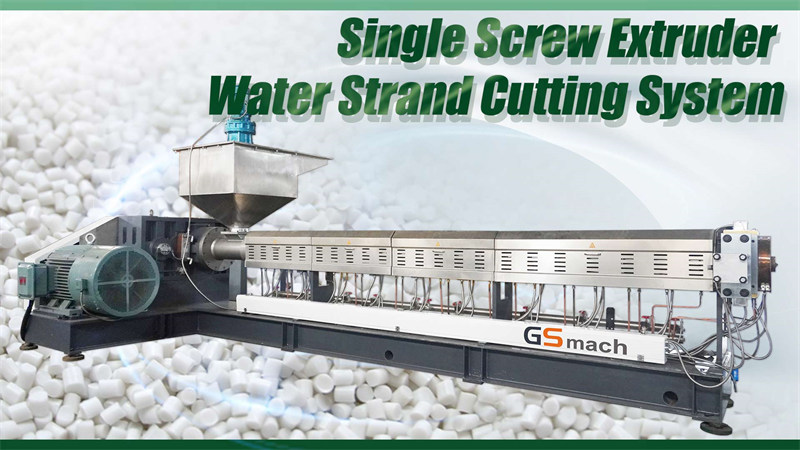
Extruder is a kind of plastic machinery, is commonly used in the modified plastics industry, widely used in the polymer processing industry and other production and processing areas. Extruder can be divided into single screw extruder and twin screw extruder. They have different working principles and applications, and each has its own advantages and disadvantages.
First of all, there are many differences between single-screw extruders and twin-screw extruders in terms of plasticising capacity, material conveying method, speed occasion cleaning and so on. As shown below:
1. Different plasticising ability: single screw is suitable for plasticising polymer extrusion and extrusion processing of granular materials; the shear degradation of polymer is very small, but the material stays in the extruder for a long time. Twin-screw mixing has good plasticising ability, short residence time in the extruder and is suitable for powder processing.
2. Different material conveying mechanism: material conveying in single-screw extruder is drag flow, solid conveying process is friction drag, melt conveying process is viscous drag, the friction coefficient of solid material and metal surface and viscosity of melt material largely determines the conveying capacity of single-screw extruder. Material conveying in a twin-screw extruder is positive displacement conveying. As the screw rotates, the material is forced forward by the intermeshing threads. The capacity for positive displacement conveying depends on the proximity between the screw edge of one screw and the screw grain of the other screw. Large positive displacement conveying can be obtained by using a close-meshing counter-rotating twin-screw extruder.
3. Cleaning for different speed occasions: The speed distribution in a single-screw extruder is clearer and easier to describe, while the situation in a twin-screw extruder is more complex and difficult to describe. This is mainly due to the engagement area of the twin-screw extruder. The complex flow in the engagement area makes the twin-screw extruder have the advantages of full mixing, uniform heat transfer, high melting capacity and good exhaust performance, but it is difficult to accurately analyse the flow state in the engagement area.
4. Different self-cleaning: twin-screw extruder shear speed, because the engagement zone of the spiral rib and spiral groove of the speed of the opposite direction, the relative speed of fast, can scrape off any attached to the screw on the accumulation of material, has a good self-cleaning effect, the material stays for a short period of time, it is not easy to occur local degradation. Single screw extruder does not have this function.
In addition to different working principles, they have different application areas. Twin-screw extruders are widely used in the physicochemical modification of matrix resin, such as filling, reinforcing, toughening, reaction extrusion, etc.; single-screw extruders are mainly used in the field of pipes, plates, sheets and profiles.
Application examples of twin-screw extruders: glass fibre reinforcement, fuel-resistant pelleting (e.g. nylon 6, nylon 66, polyester, polybutylene terephthalate, polypropylene, polycarbonate, etc.). , high filler pelletising (e.g. PE and PP filled with 75% CaCO3), thermosensitive material pelletising (e.g. PVC and cross-linked polyethylene cable materials), concentrated masterbatch (e.g. filled with 50% colour powder), anti-static masterbatch and alloy cable material pelletising (e.g. sheathing and insulating materials), cross-linked polyethylene pipe pelletising (e.g. hot-water cross-linking masterbatch), thermoset plastics mixing and extruding (e.g. phenolic resins, epoxy resins and Powder coating), hot melt adhesive and polyurethane reaction extrusion granulation (such as EVA hot melt adhesive and polyurethane), K resin and SBS de-volatilisation granulation.